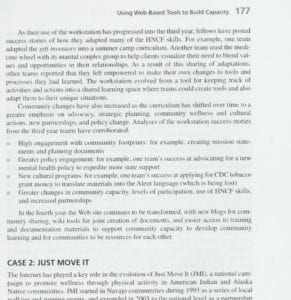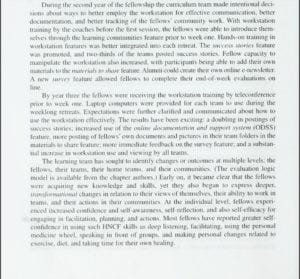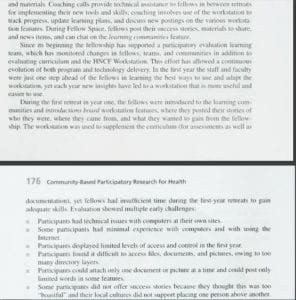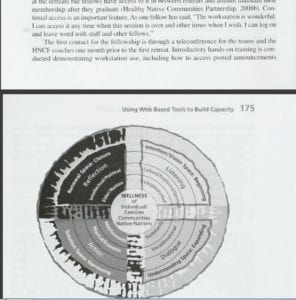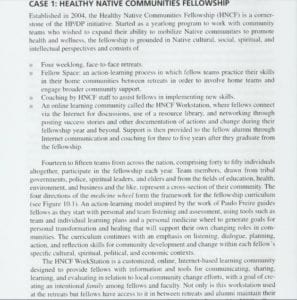Select a case study and critique the study by applying the principles of CBPR
Across the globe, there is a widely-held belief that science, including the health sciences, is (and should be) planned and conducted by scientists and health professionals. However, when it comes to understanding populations and communities, it is difficult for an outsider to understand what is really going on inside a community. Researchers and health professionals may visit a community and measure the number of people who access a screening service, or have been vaccinated, or who attend an alcohol recovery program. These researchers may even conduct a focus group of local citizens to find out what they think about the vaccination program, or a spike in teenage suicide, or any one of thousands of possible events in the community. However, the only way to truly understand a community is to collaborate with community members in organizing and implementing the inquiry.
This is the basis for Community-Based Participatory Research (CBPR)— also known as “Participatory Research” or “Participatory Public Health Research”—in which community members play an active role in researching local problems and planning the programs intended to solve them. The principal objective of CBPR is to make communities active agents in health research, not just passive participants. The idea is that people who experience a problem every day are likely to understand that problem best; and solutions based on that understanding are likely to be the most effective ones. It is this level of agency and engagement that makes an intervention program more amenable to the community and thus more successful.
CBPR is not simply a set of techniques; it represents a shift in attitude and power relations away from the traditional “top-down” approach to a more “community-driven,” “bottom-up” approach. In the practice of CBPR, health professionals learn to accept community members as their partners in deciding what will be examined and in the collection and analysis of data. For many health professionals, this shift is one of the most challenging aspects of CBPR—sharing power with the communities they are here to serve!
For this Discussion, you will select a case study and critique the study by applying the principles of CBPR as set forth in your Minkler and Wallerstein textbook.
With these thoughts in mind:
Read this week’s Learning Resources, focusing on the principles of CBPR laid out in Chapter 3 of your Minkler and Wallerstein text and on the Case Studies in Chapter 10 of that text.
Select one of the case studies from Chapter 10 of Minkler and Wallerstein for your Discussion post.
Assignment
Identify the case study you have chosen, and provide a 2- to 3-paragraph critique of that case study using the principles of CBPR as your criteria.
Answer preview to select a case study and critique the study by applying the principles of CBPR

340 words

